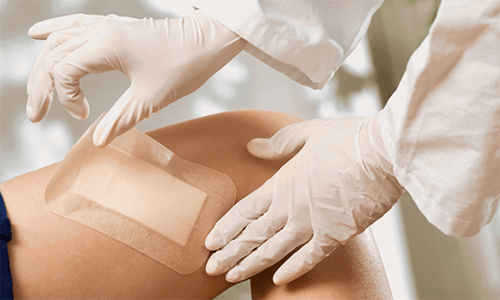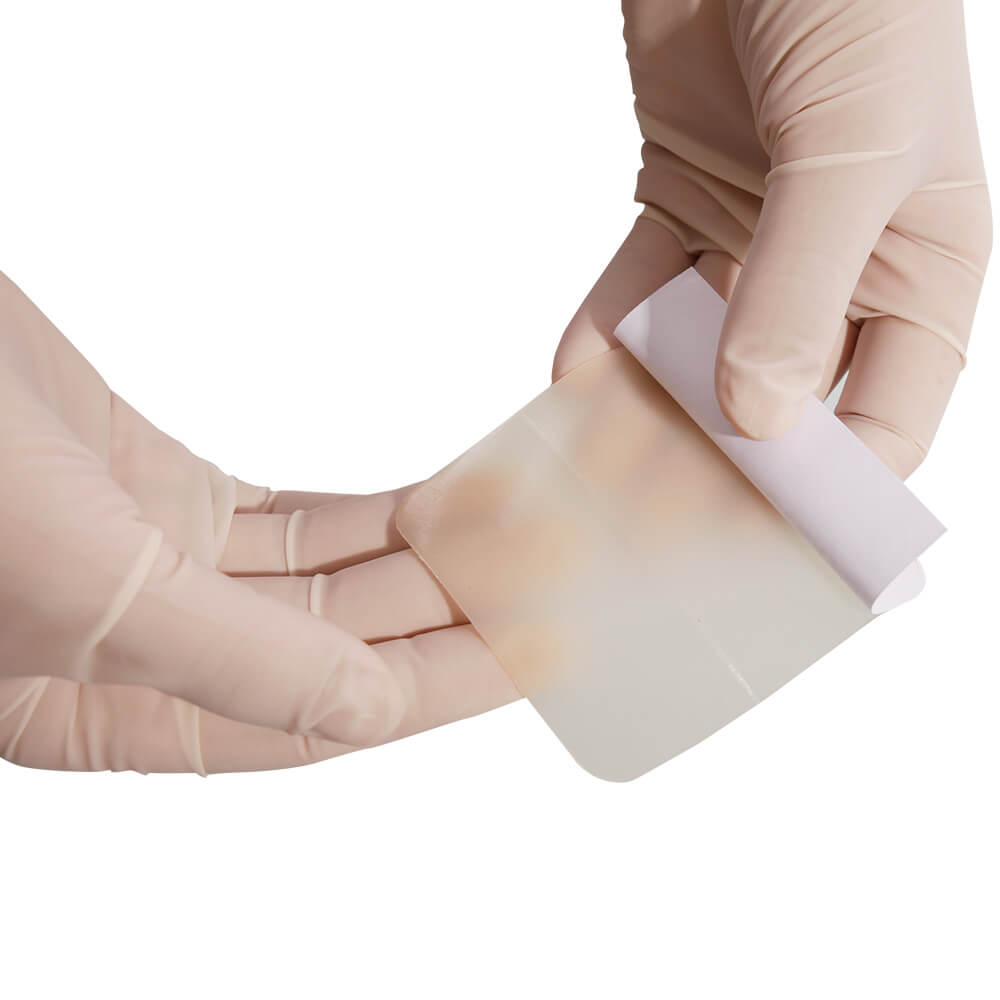06/03/2024
ByWinner Medical
 1398
1398

Burns generally refer to injuries to the skin and mucous membranes, mainly caused by hot fluids, flames, vapors, hot metallic liquids, or solids. In severe cases, they can also injure subcutaneous tissues such as muscles, joints, and even bones. It is estimated that about 180,000 people die from burns each year.[1] Burns are common in the home and a danger everyone may experience.

So, how do we treat and minimize the damage when family members get burned? Choosing the right wound care products is crucial to help prevent infection and promote healing. Modern wound care products are often divided into two categories: dry and wet wound care products, and which to choose depends on the severity of the wound. This article will provide you with some suggestions.
Comparison of Dry or Wet Wound Care Products
The steps for caring for burns are often divided into cleaning the wound to cool the skin, determining the severity of the wound, and selecting appropriate antimicrobial dressings.
1. Traditional Wound Care Products
It refers to dry wound care solutions such as gauze, bandages, and cotton. These products are cheap and easy to use. Cotton gauze deals with exudate quickly, bandages act as a "hemostatic agent" and fix the injured area, cotton buds, and cotton balls help with wound management, etc.
Traditional dry wound care products are generally used for small acute wounds or as an adjunctive solution to wound management. However, their dry surfaces can slow down the wound healing process and cause scar formation, as a moist wound environment proves to be more favorable. There is also the potential for secondary damage to the wound when changing, so it is recommended as an auxiliary.
2. Advanced Wound Care Products
Advanced wet wound care products include hydrogels, hydrocolloid dressings, alginate wound dressings and antimicrobial solutions. They utilize the wet wound healing principle, which is beneficial in reducing pain, absorbing exudate, and preventing infection. In addition, such products are easy to remove and do not cause secondary damage to the wound during changes.
Some scar repair products, such as silicone, can reduce the amount of collagen produced by balancing the wound moisture, thus preventing the overgrowth of granulation tissue. It is ideal for fading scars after burns.
Overall, advanced wet wound care products are more recommended when dealing with burns, whether it is for pain relief, infection prevention, or scar reduction after burns.

How to Distinguish Burn Degrees?
Grading the burns is the first step in determining a treatment plan.[2] It is divided into three grades:
1. First-degree Burns
First-degree burns occur only in the superficial layers of the skin and have the least damage to the skin. The wound shows redness, pain, slight swelling, and dryness. Since no regenerative tissue is affected, it heals in about a few days without scarring. Patients can take the following care steps:
lCool the wound by washing or soaking it in cold water.
lUse protective barrier wipes to relieve skin friction and protect the affected area.
lUse hydrocolloid dressing to protect the wound and prevent infection.
2. Second-degree Burns
Second-degree burns mean that both the epidermis and the dermis are damaged. The skin's surface becomes blistered, red, swollen, and seriously painful. The blisters may leave pigmentation or scarring when uncovered, and these wounds take several weeks to heal. For patients, the following steps may be helpful:
lImmediately wash with cold water to cool it down
lPainkiller may be needed
lRemove the damaged tissues with tube hydrogel
lAbsorb exudate with silicone foam dressings
lPrevent wound infection with silver alginate dressings
3. Third-degree Burns
Third-degree burns are also called full-thickness burns. This type of burn is the most severe, damaging the tissues and nerve endings under the skin, so patients feel no pain. The wound appears as a black or brown color, and the top layer of skin becomes a leathery texture. Patients should immediately call the emergency services and perform surgery in this case. Be careful not to undress after the burn to prevent skin from falling off directly due to adhesion.
During the healing phase, patients can use activated charcoal super absorbent wound dressings to absorb wound odor, silicone foam dressings to absorb exudate, and silicone scar repair sheets to help fade scars.
What are the Nursing Guidelines after Burn Healing?
Severe burns need weeks or months to heal. The skin is fragile during the healing stage and still requires daily care. For example, avoid direct sunlight and friction to minimize pigmentation and abrasions. Avoid scratching the scabs, which can impede healing. In addition, patients need to change their wound care dressings regularly to provide the best environment for wound healing. Finally, consuming foods rich in protein, vitamin C, and zinc will also help heal wounds.
Winner Medical Provides a Complete Cycle of Wound Care Products for Patients
Founded in 1991, Winner Medical is an advanced company in the disposable medical supplies market with a full product line and multiple ISO certifications. Due to our strong R&D capabilities, comprehensive quality management system, supply chain, and on-time delivery capabilities, our wound care supplies have always been the first choice for medical institutions.
Traditional wound care solutions such as medical gauze are made from high-quality imported cotton, which is white, soft, and has no impurities. Strong bandages are soft and breathable to fix dressings.
We have also been developing and upgrading advanced wound care solutions such as hydrocolloid dressings, alginate dressings, silicone scar repair sheets, silver antibacterial dressings, and other products. They can help in the treatment and prevention of complex wounds such as ulcers and burns and help promote wound healing and control infection. Choosing the right wound dressing is a critical step in treatment!

Conclusion
Overall, understanding the difference between dry and wet wound care products helps patients choose the right treatment options to promote healing and minimize pain and scarring. Correctly determining the grade of burns allows patients to take advantage of the golden time to minimize damage. Contact us if you would like to learn more about Winner Medical's products!
References
[1] Burns. Available at: https://www.who.int/news-room/fact-sheets/detail/burns (Accessed: 21 February 2024)
[2] Burn Classification. Available at: https://www.ncbi.nlm.nih.gov/books/NBK539773/ (Accessed: 21 February 2024)